Gameplay
| | This section is empty. You can help by adding to it. (February 2018) |
| Players | 1 or 2 |
|---|---|
| Setup time | < 2 minutes |
| Playing time | > 1 hour |
| Chance | Medium |
| Skills | Planning, strategy, tactics |
The Operational Art of War (TOAW) is a series of computer wargames noted for their scope, detail, and flexibility in recreating, at an operational level, the major land battles of the 20th century. A Norm Koger design, TalonSoft published the first of the series in 1998. Matrix Games bought the rights to the franchise and created a new game in 2006, TOAW 3, which was the first non-Norm Koger designed game in the series.
| | This section is empty. You can help by adding to it. (February 2018) |
TalonSoft published:
Matrix Games published:
The basic appearance of the game is the traditional view onto a hexagonal grid, although the player may choose a map-like overhead view with military symbols and basic info for the units, or an isometric view that depicts the units with small pictures of soldiers, tanks, etc. Gameplay is turn-based.
The scale of the game is variable, with distances ranging from 2.5 km per hex to 50 km per hex, and each turn simulating from 1/4 day to 1 week of time, but is fundamentally "operational", focusing on battalion, division, and corps combat. The option of scale is left to a maker of a particular scenario to choose, resulting in a wide range of user-made scenarios; ranging from, for example, a small engagement in northern Germany between several companies to an entire World War II on division scale.
The maximum number of units that can be made in a scenario was 2,000 per side until TOAW IV, although managing more than 200 can often be complicated. Each unit is assigned unique equipment (types of infantry, tanks, aircraft, etc.) and given its own name, info and color code.
The game also includes "events", which is a series of programmable events which display a message and can have several different causes and effects. The variability of these events makes each scenario—when properly designed—very complex and variable. The maximum number of in-game events is 500 (or 1,000 for TOAW III version).
The games include a scenario editor, and much of the content in the follow-up games are designs developed by the community of avid players.
Version IV was released November 2017, [1] and included a large number of changes, [2] among which are:
In the United States, The Operational Art of War sold 12,789 copies during 1998. These sales accounted for $555,681 in revenue that year. [3]
In the United States, The Operational Art of War Volume II sold 1,298 copies during 1999. [4]

Panzer General is a 1994 computer wargame developed and published by Strategic Simulations Inc. (SSI). It simulates conflict during World War II. The designers of Panzer General were heavily influenced by the Japanese wargame series Daisenryaku.

Age of Wonders is a 1999 turn-based strategy game co-developed by Triumph Studios and Epic MegaGames, and published by Gathering of Developers.

Steel Panthers is a series of computer wargames, developed and published by several different companies, with various games simulating war battles from 1930 to 2025. The first Steel Panthers game was released in 1995, and the most recent update was released in 2018 and is still updated regularly (yearly).
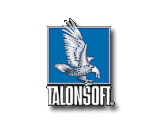
TalonSoft, Inc. was an American video game developer and publisher based in Baltimore.

Langrisser is a fantasy tactical role-playing video game series created by Masaya Games. The main development team is Career Soft, first as Team Career within Masaya Games for the first three games and then as an independent studio for Langrisser IV and V. The series has a fantasy-Germanic setting, but draws on religious concepts like ditheism and sword worship for historical context. The series was originally released for Sega platforms during the 1990s, with the first two installments originally made for the Mega Drive, followed by third through fifth installments for the Sega Saturn. Ports and remakes were also made for other platforms such as PC Engine, Super Famicom, PC-FX and PlayStation during the same period.
Matrix Games is a publisher of PC games, specifically strategy games and wargames. It is based in Ohio, US, and Surrey, UK.
Turn-based tactics (TBT) is a video game genre of strategy video games. They are turn-based simulations of operational warfare and military tactics in generally small-scale confrontations as opposed to more strategic considerations of turn-based strategy (TBS) games. Turn-based tactical gameplay is characterized by the expectation of players to complete their tasks using only the combat forces provided to them in a generally realistic manner.
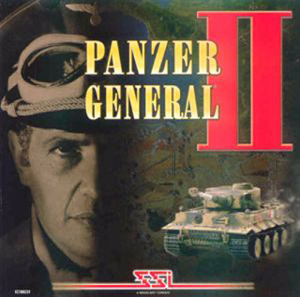
Panzer General II is a computer wargame by Strategic Simulations, Inc. Released October 15, 1997, Panzer General II is the sixth SSI game in the Panzer General series and the first in the "Living Battlefield" series. It takes place during World War II, covering events from the Spanish Civil War in 1938 to hypothetical battles in 1946. In the April 2000 issue of the magazine PC Gamer, it was voted the 44th best computer game of all time, and the highest rating in the Panzer General series. The game was re-released in 2010 on GOG.com.

Battleground 2: Gettysburg is a 1995 turn-based computer wargame developed and published by TalonSoft. It the second game in the Battleground series.
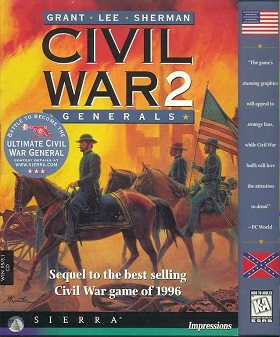
Grant, Lee, Sherman: Civil War Generals 2 is a computer game published by Sierra On-Line in 1997. It is the sequel to Robert E. Lee: Civil War General.

Close Combat III: The Russian Front is a 1999 computer wargame developed by Atomic Games and published by Microsoft. It is the third game in the Close Combat series. It revolves around the Eastern Front during World War II, and takes players from the invasion of the Soviet Union to the final battle for Berlin in 1945. A remake, Close Combat: Cross of Iron, was released in 2007.

People's General is a turn-based computer wargame developed by Strategic Simulations, Inc (SSI). It was released in September 1998 in North America and Europe. The game focuses on early 21st century warfare in Asia. People's General, or PeG as it is commonly known, followed SSI's successful 5 Star General Series of World War II war games and their sequel, Panzer General II (PG2). It uses the same game dynamics as these earlier games—turn-based movement & fighting with military units on a hex based map. PeG uses substantially the same "Living Battlefield" game engine as PG2 but features higher quality graphics and many new features.

Close Combat is a 1996 real-time computer wargame developed by Atomic Games and published by Microsoft. Set during World War II, it simulates the conflict between the United States' 29th Infantry Division and Germany's 352nd Infantry Division after the Invasion of Normandy. The player controls an artificially intelligent army whose behavior is dictated by psychological models: each soldier makes decisions based on the circumstances of the battlefield and can disobey the player's orders.
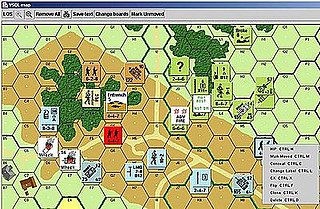
A computer wargame is a wargame played on a digital device. Descended from board wargaming, it simulates military conflict at the tactical, operational or strategic level. Computer wargames are both sold commercially for recreational use and, in some cases, used for military purposes.

The Operational Art of War I: 1939–1955 is a 1998 computer wargame developed and published by TalonSoft. Designed by Norm Koger, it covers military conflicts around the world at the operational level of war, between 1939 and 1955.

The Operational Art of War II: Modern Battles 1956–2000 is a 1999 computer wargame developed and published by TalonSoft. It is the second game in the Operational Art of War series.
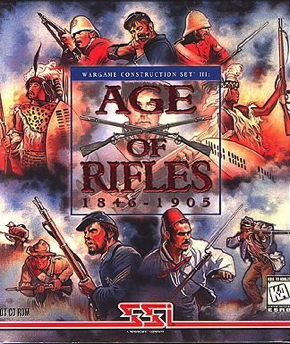
Wargame Construction Set III: Age of Rifles 1846-1905 is a turn-based computer wargame for MS-DOS, written by Norm Koger. It was published in 1996 by Strategic Simulations. It is the third game in the Wargame Construction Set series, following Wargame Construction Set (1986) and Wargame Construction Set II: Tanks! (1994).
Battleground is a series of turn-based computer wargames developed and published by TalonSoft for Microsoft Windows between 1995 and 1999. Nine games were released in the series, each based on a different historical battle.